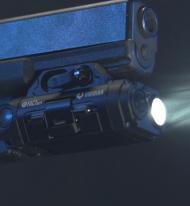Matthew Plowman, J.D.
General Counsel and Chief Legal Officer
As Viridian WMCs emerge on to the scene with hundreds of law enforcement agencies now in various stages of testing and implementing our product, Viridian will continue to get national attention. So far most of it has been positive and in recognition of our law enforcement evidentiary solution. We recognize, however, that it is not possible to satisfy everyone.
Some commentary of our product appears to presume that WMCs are an “either/or” proposition with BWCs. We have been consistent in our position that WMCs can be an alternative OR a supplement to a body camera program. A police agency that implements a BWC program undoubtedly has interests beyond resolving relatively rare officer involved shootings. The majority of events in municipalities of all sizes do not normally even involve officers’ guns being drawn from the holster, and the majority of incidents involving gun draws do not ultimately end in a tragic shooting. BWCs are an extremely valuable tool for holding law enforcement and the public accountable to the community in all encounters. However, an agency’s efforts at full transparency are incomplete if its video evidence solution does not adequately address the most catastrophic event it can face - an officer-involved shooting. The recent controversial officer-involved shootings of Stephon Clark in Sacramento and Miguel Richards in New York City illustrate this potential shortcoming.
Body camera footage of Sacramento officer-involved shooting of Stephon Clark.
Body camera footage of NYPD officer-involved shooting of Miguel Richards.
The Sacramento PD and NYPD body cameras were properly activated and functioning (a separate issue to be addressed in an upcoming Blog), but the community and the police department have no idea what really happened because the BWC view in each of these case examples was blocked.
Our analysis was that just 37% of shootings were adequately captured by properly functioning and activated body cameras. On the other 63% (nearly 2 out of 3) of occasions, the BWC was blocked by the officer’s body or other obstacles. Another 11% of the time, there was no BWC video to review because the BWC was not activated by the officer (an obstacle overcome by our WMC’s Instant-On technology in which it records automatically when the gun is drawn from the holster).
We analyzed that weapon-mounted cameras deployed in the same events would provide adequate evidence and show the critical view from the officer to the subject at least 86% of the time. For agencies that have prioritized agency transparency, accountability and trust by implementing a body camera program, it seems incomplete to risk not capturing the most critical event of an OIS, especially when an OIS is generally the event most likely to cause toxic relations between the community and police that are harmful for everyone in a community, not to mention the event most likely to cause significant financial damages exposures. For just a small additional one-time cost added to a typical BWC implementation and long term data management and storage commitment, a department can more likely assure the public transparency it is striving for to include the high severity, catastrophic event that is consistent with the whole basis for adding Body Cams. Our typical police agency customer that is adding a WMC program to an existing BWC program is able to add the WMCs for approximately 5% total additional cost to existing BWC payment obligations.
We want agencies and the communities they serve to understand that BWCs and WMCs are not an either/or but two technologies that complement each other to achieve the transparency the public demands for all types of encounters, including an OIS.
In many other communities, it does come down to a choice between the devices (normally due to budget or technology implementation considerations). We support the decisions of these communities that it is a viable risk management decision to prioritize addressing the low frequency but high severity event such as a shooting with a WMC program, for just a fraction of the total costs of a BWC program. Where BWC funding is an issue, such a municipality may not have the luxury of being able to protect itself and achieve transparency from consequences of all police encounters with the public. Such a municipality can, however, at least mitigate its risk and give the best opportunity for transparency in the most severe of all events.






No Comments yet. be the first to comment.